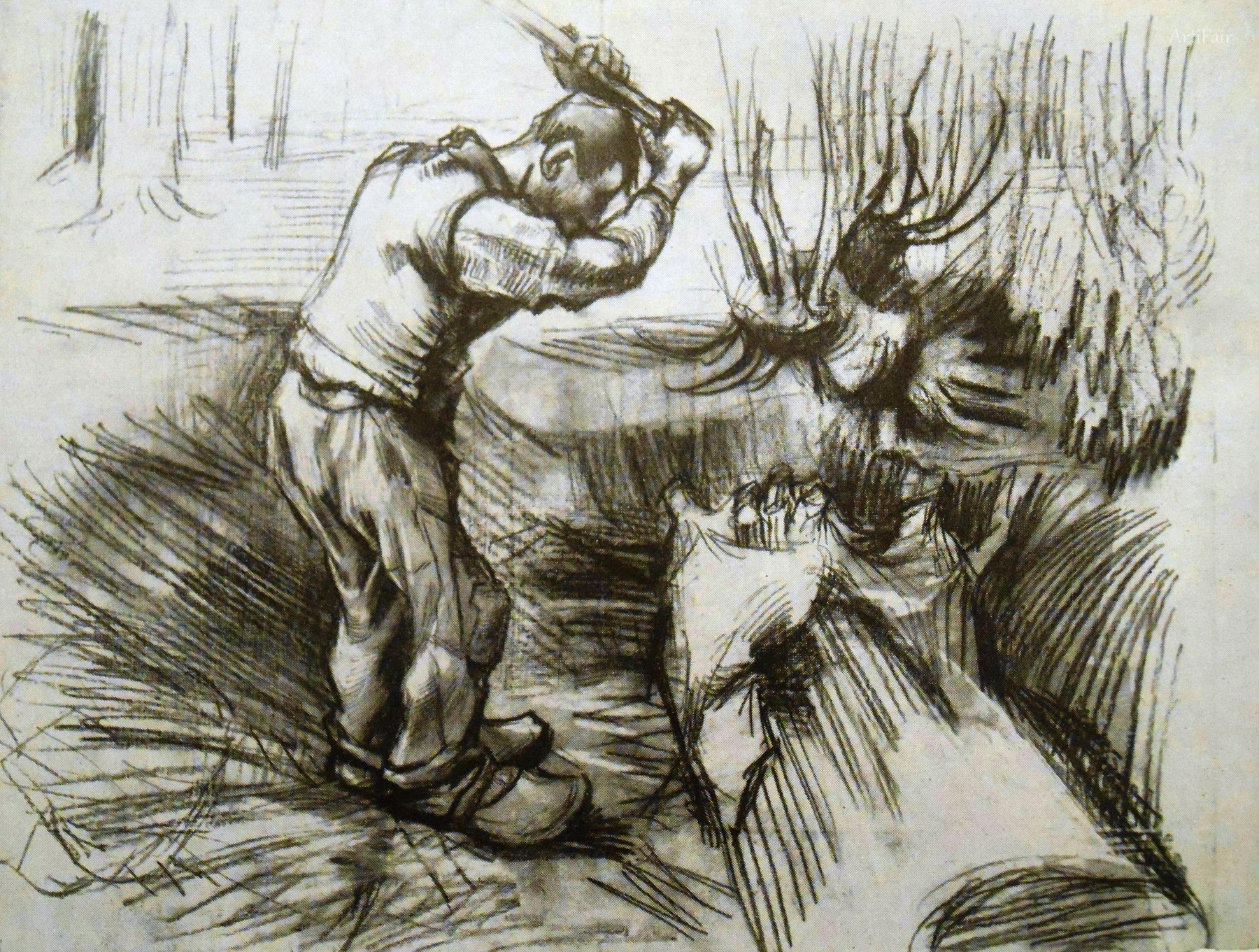
Art Appreciation
In this compelling work, we encounter a solitary woodcutter, engrossed in his task amidst an atmospheric woodland setting. The figure, hunched over, appears to channel all his physical effort into the swing of his axe, which is poised mid-strike. This moment captures not just the act of chopping wood, but a snapshot of labor and tenacity. The rugged lines and expressive strokes convey the intense energy and strain involved in this physical endeavor, making the viewer almost feel the weight of each blow reverberating through the trees. The background, with its abstracted tree forms, casts a seductive depth, implying an intricate, possibly oppressive, relationship between man and nature; the latter remains silently watchful over the human toil.
The choice of monochromatic tones lends the artwork a powerful sense of mood—a stark contrast between the dark shadows and the lighter areas surrounds the woodcutter, emphasizing his isolation. Van Gogh’s structural use of lines not only draws the eye toward the intense figure but also achieves a rhythmic pulse that evokes a profound emotional response; one can almost hear the swish of the axe as it meets the wood. In the historical context of the late 19th century, this piece reflects the artist’s own struggles and aspirations, often tinged with a melancholic sensitivity to labor and the human spirit. It’s a striking reminder of the artist's deep understanding of everyday life's simplicity and hardships, enabling it to transcend mere representation and invoke deeply felt connection.